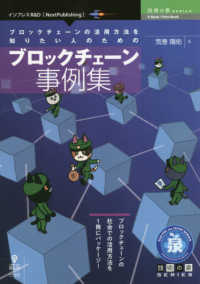Full Description
Written for music educators from K - 5 onwards, First Instruments is a practical guide to teaching musical ideas through the first instruments we develop in early childhood, laying the foundation for how the collective creativity the book presents can sustain a lifelong commitment to music-making: voice and hand gestures. Founded on the belief that all children are musical, the book gives music teachers the necessary tools to develop students' confident understanding of pitch relationships through improvisation and composition. Author Nicholas Bannan, a veteran pedagogue and children's choir director, accomplishes this in a classroom-tested system that combines Kodály hand signs with extended use of physical motions that together result in deeply embodied musical knowledge. By participating in the book's many group exercises, students develop this knowledge that ultimately paves the way for acquisition and functional working knowledge of harmony that tends to elude most theory students. As Bannan shows, all effective music teaching needs to involve singing as the portal to a secure and transferable response to pitch. First Instruments encourages educators to draw on games, tasks, and activities in relation to their own curriculum planning. Marrying the development of fluent singing abilities with harmonic understandings, this approach supports musical creativity that is not dominated by the conventional features of a particular genre or style, but instead liberates the musical imagination and enables the exploration of musical styles from throughout history and all over the world.
Contents
List of Illustrations
Acknowledgements
About the Companion Website
Introduction
Part 1: Why Singing?
Chapter 1 Musical foundations
Chapter 2 The anatomy of human music-making
Chapter 3 The instinctive and the learned
Chapter 4 Music as 'the missing link': a distinct form of thinking and feeling
Chapter 5 The aural feedback loop and inner hearing
Chapter 6 The four elements of vocal learning
Chapter 7 Lifelong participation and transmission
Part 2: Why Signing?
Chapter 8 Representation and Communication
Chapter 9 The two hemispheres of the brain
Part 3: Patterns of Leadership and Interaction
Chapter 11 Collective Creativity
Chapter 12 Signs about signs: the notation of Harmony Signing
Chapter 13 Working on Your Own
Chapter 14 Working in Pairs
Chapter 15 Working in Groups
Chapter 16 Working with instrumental classes and bands
Chapter 17 Working with vocal classes and choirs
Part 4: Building creatively on Harmony Signing
Chapter 18 What Are Students Expressing Musically?
Appendices
Bibliography
Index








